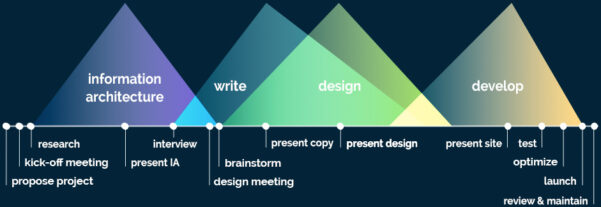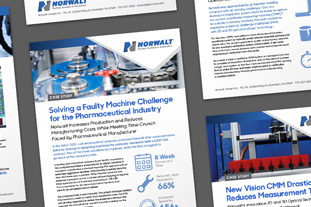What is the difference between a business that consistently produces amazing work and a business that manages to craft ho-hum work? The answer lies in having well-developed and well-defined, regularly executed but continuously improving and strong processes.
A process is a set of defined tasks needed to complete a given activity, including who is responsible for completing each step, when, and how they do so. Though processes can seem rote or mundane, their importance cannot be overstated.
A recent Forbes article showcased the evolution of processes and how they remain an integral part and a necessity of doing business; however, the methodology of how companies and organizations go about honing their processes has drastically changed over the years.
Think of your strong processes as a strategy
The systems you put in place, when done correctly, allow your organization to run systematically and relatively predictably. Processes contribute to the flow of your company by offering a solid foundation for your team to work from.
By leveraging strong defined processes, you can deliver to clients more quickly and efficiently and you are able to pivot when things come up last minute. Process minimizes
- redundancy
- rework
- overwork
Speaking of clients, each client is different in their needs, communication styles and overall personality so being agile and flexible to adjusting your processes is key in ensuring positive outcomes no matter what project or scope you may have to tackle.
Processes are best created collaboratively through a bit of trial and error. See what works and what doesn’t and adapt accordingly.
However, you certainly don’t want to have to reinvent the wheel every time, so share your process upfront with your clients prior to starting on a project and emphasize that following the processes that your business utilizes minimizes the chances for hiccups.
Following a strong consistent process allows your team to focus and devote their time and attention to the project at hand. Clients often underestimate the amount of time and resources needed to complete and get projects across the finish line, particularly when they are not familiar with the many nuances of the requisite work that needs to be done.
So be clear and concise both verbally as well as in your contractual language about
- timelines
- deadlines
- expectations
If clients insist on special treatment or articulate that they don’t want the expense of extra steps, they are not giving you the opportunity to provide your best work.
Process and protocol is all about balance
Too little of it and you lack direction and consistency, too much of it and you strangle creativity and action. Just the right amount, however, can be a real competitive advantage. You want your work to fire on all cylinders, leaving clients wanting more of what you can offer them.
At Aviate, we purposefully run a tight ship when it comes to our process because it is imperative that we collectively all row in the same direction keeping objectives, turn times and budget top of mind. When we onboard with clients we have a consistent way of approaching:
1. intake
2. kick-off
3. discovery
We also share clear intentions around our:
1. communication
2. timing
3. creative approach
We are willing to tinker with the way we do things by being nimble when something requires it. Sometimes the best way forward for all involved is in finding the path of least resistance, which in the end benefits everyone including our clients.
However we do stay true to the core components of our process which serve as the building blocks of who we are and how we get things done and done well. To learn more about how we do things at Aviate, check out our website’s process page.
Bottom line you don’t want frayed tempers, unhappy clients or team members. It is essential to establish a stepwise work production process and foster an environment where all parties honor and respect it.




